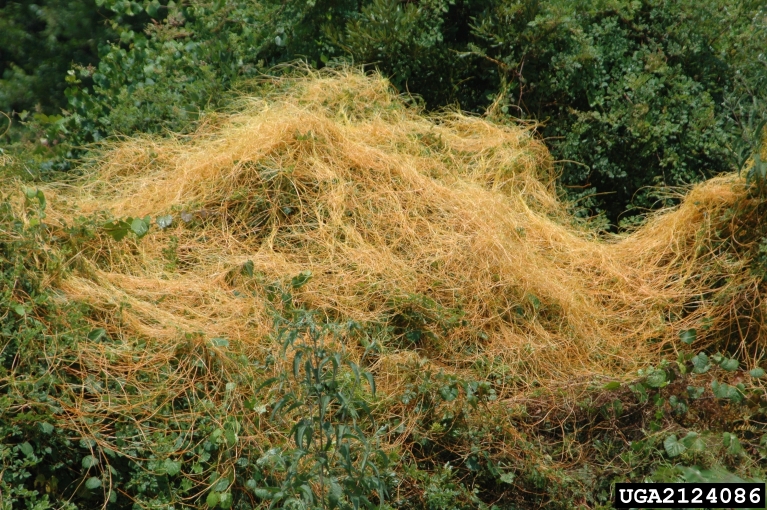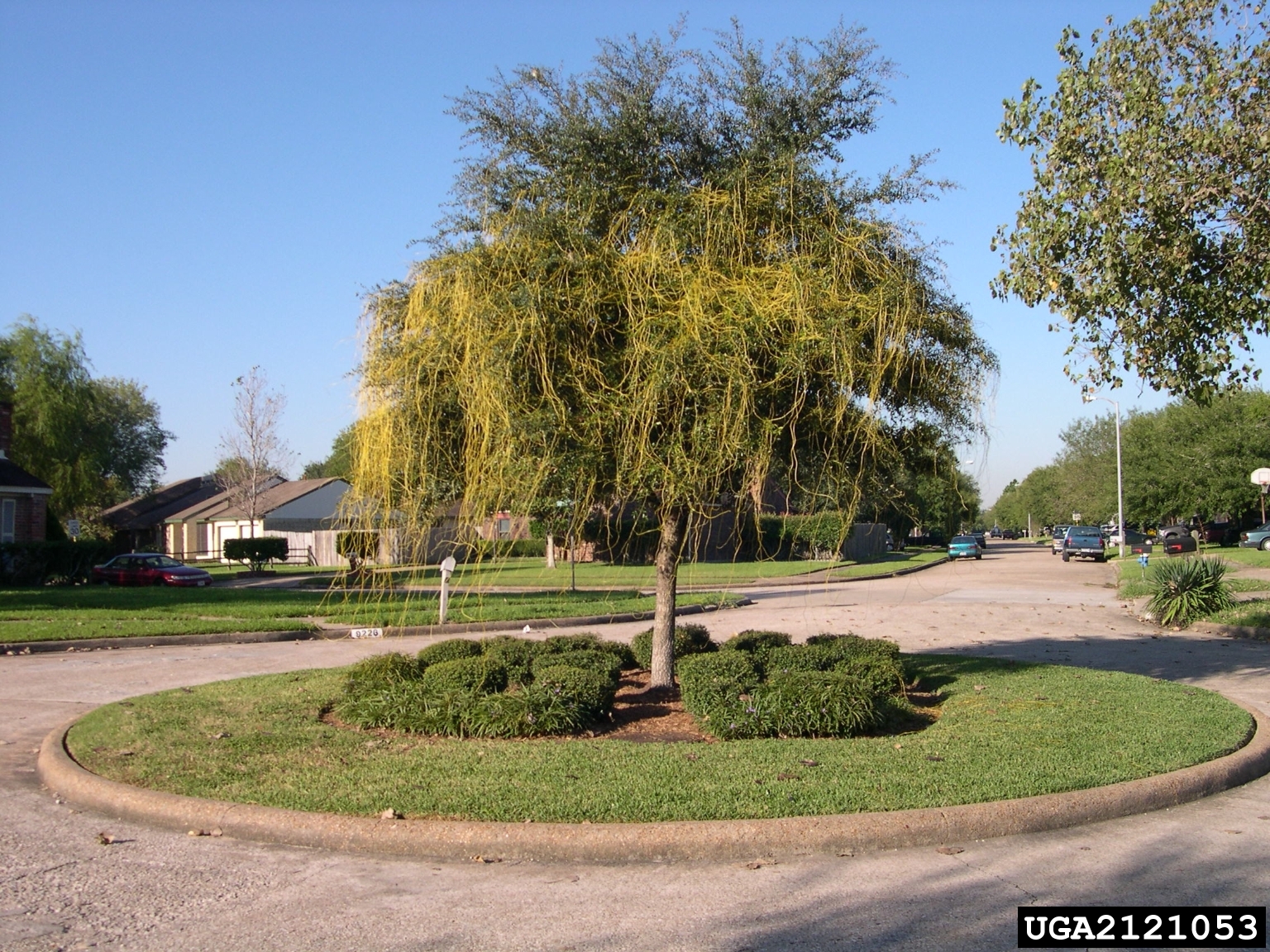 Dodder: a Parasitic Plant - August 8, 2018 Jeff Schalau, Agent, Agriculture & Natural Resources University of Arizona Cooperative Extension, Yavapai County Have you ever seen a plant that appears to be covered with something that resembles golden spaghetti? Iíve most often observed it at 50 MPH on the roadside, but if you stop and take a close look, you may notice that itís rooted in the ground and also growing into another host plant. This viny mass is a parasitic plant called dodder. If you havenít seen it before, watch for it and take a closer look. Dodder was once classified as being in the morning glory family (Convolvulaceae), but was more recently given its own family: Cuscutaceae. According to the UDSA Plants Database (plants.usda.gov) are over 150 species of dodder worldwide and all are in the genus Cuscuta. It is a warm season annual that germinates in early to midsummer depending on soil moisture. Dodder is a true obligate parasite: the host plant receives no benefit from the dodder and dodder must have a host plant to survive. Dodder appears leafless (it does have small scales) and lacks sufficient chlorophyll to produce any significant amount of its own food. It attaches to a host plant with small, root-like appendages called haustoria which allow it to extract carbohydrates, water, and nutrients. It is usually a golden color, but can also be tinged with red or purple. The flowers are often numerous, white, pink or yellowish, and 2 to 4 mm long. Flowers normally appear from early June to the end of the growing season. The flowers produce small fruits which are about 1/8th inch in diameter and contain 1 to 4 seeds. Dodder seeds drop to the ground and germinate the next growing season. The seeds may remain dormant for up to twenty or more years. The seeds require moisture and sunlight for germination and do not need to be associated with a host plants to germinate. However, if a suitable host is present, it will parasitize it. Following germination, dodder seedlings must attach to a suitable host within a few days or they will die. Much like a pole bean, dodder seedlings swirl around until they encounter a potential host plant. If the host plant contains suitable foods, then the haustoria penetrate the stem. Once the above-ground connection is made, the original connection to the soil where the seed germinated is no longer necessary and this portion of the plant shrivels away. Dodder is an annual plant and dies each winter in our temperate climate. Among the many species of dodder, hosts can vary widely. Economically important host species include alfalfa, lespedeza, flax, clover and potatoes. Ornamental plants susceptible to dodder include chrysanthemum, dahlia, helenium, Virginia-creeper, trumpet-vine, English ivy and petunias. The dodder I have seen in Yavapai County is likely a native species because it had colonized roadside plants such as annual sunflowers. One Arizona species of dodder also colonizes puncturevine. The easiest way to control dodder is to manually remove dodder seedlings and hosts when possible. Many references cite the use of pre-emergent herbicides to prevent dodder germination. I have not seen any cases that have warranted this action in northern Arizona. If you see dodder in your area, it may be prudent to control it manually. Seeds have also been known to be dispersed in irrigation water where ditch systems are present. In addition, buy only clean, certified seed, and make sure to keep all annuals or perennials clean of dodder. Also be aware that imported soil can contain dodder as well as other invasive weeds. Successful dodder control involves a systematic approach that combines several methods; you usually canít eliminate dodder with a single treatment or in a single year. If you see native dodders infesting herbaceous landscape and garden plants, take immediate action to eliminate or reduce the infestation. Effective management requires control of the current population, prevention of dodder seed production, and suppression of new seedlings in subsequent years. Ornamental grasses and most woody plants are not parasitized by native dodders. Japanese dodder can colonize woody plants and is known to occur in California and Texas. I have included additional photos and resources about dodder with the online edition (see URL below). Follow the Backyard Gardener on Twitter Ė use the link on the BYG website. If you have other gardening questions, call the Master Gardener help line in the Camp Verde office at 928-554-8992 or e-mail us at verdevalleymg@gmail.com and be sure to include your name, address and phone number. Find past Backyard Gardener columns or provide feedback at the Backyard Gardener web site: http://cals.arizona.edu/yavapai/anr/hort/byg/. Photos  Dodder (Cuscuta sp.) parasitizing another host plant (Chris Evans, University of Illinois, Bugwood.org).
Dodder (Cuscuta sp.) parasitizing another host plant (Chris Evans, University of Illinois, Bugwood.org). Japanese dodder (Cuscuta japonica) parasitizing a tree (Kim Camilli, Texas A & M Forest Service , Bugwood.org).
Japanese dodder (Cuscuta japonica) parasitizing a tree (Kim Camilli, Texas A & M Forest Service , Bugwood.org).Resources How to Manage Pests Pests in Gardens and Landscapes: Dodder Utah State University Extension ipm.ucanr.edu/PMG/PESTNOTES/pn7496.html Vampire Plants Utah State University Extension extension.usu.edu/archive/vampire-plants USDA Plants Database Natural Resource Conservation Service Enter "dodder" in search window, toggle to common name, and hit "go". plants.usda.gov/java/nameSearch |